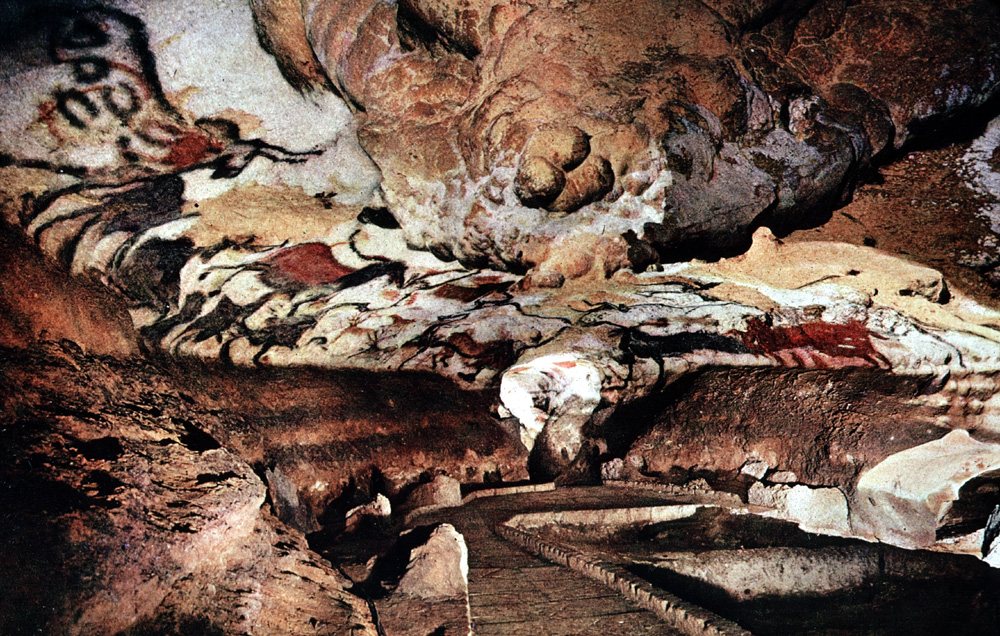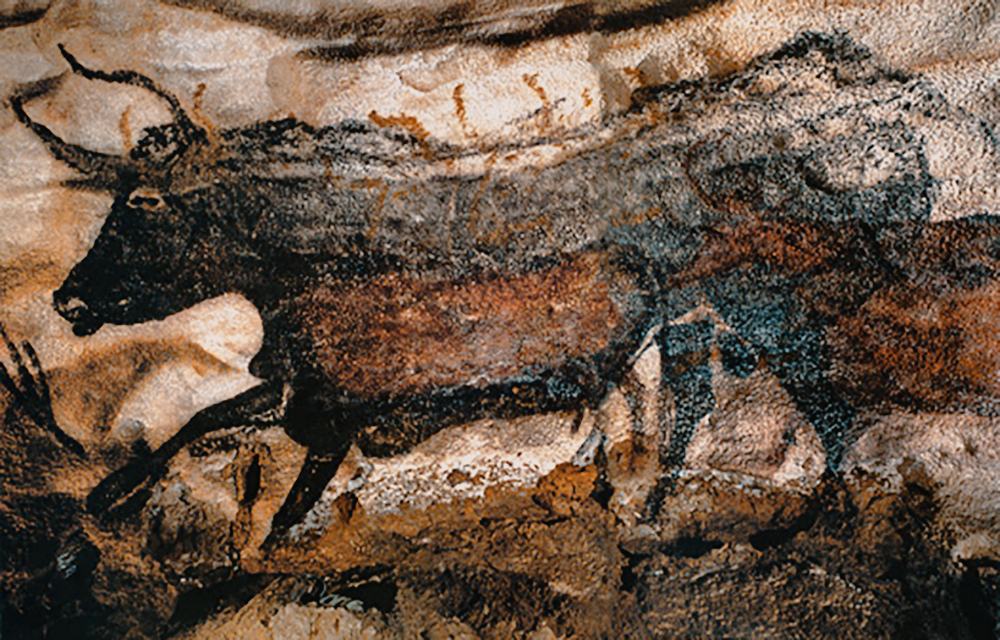I’ve always wanted to read the ancient Egyptian Book of the
Dead, but it’s a little too prosaic to count as literature. A guidebook for
religious rituals, the text comes off as more tedious than insightful. But
there’s one specific and spectacular part of the work that demands examination:
The Papyrus of Ani. More than seventy-eight feet long, it depicts the judgment
of a royal scribe named Ani by the Egyptian pantheon. He is required to make a
“Negative Confession,” while his heart is weighed against a feather for purity.
The scene, and confession:
1. I have not committed sin.
2. I have not committed robbery with violence.
3. I have not stolen.
4. I have not slain men and women.
5. I have not stolen grain.
6. I have not purloined offerings.
7. I have not stolen the property of God.
8. I have not uttered lies.
9. I have not carried away food.
10. I have not uttered curses.
11. I have not committed adultery, I have not lain with men.
12. I have made none to weep.
13. I have not eaten the heart.
14. I have not attacked any man.
15. I am not a man of deceit.
16. I have not stolen cultivated land.
17. I have not been an eavesdropper.
18. I have not slandered.
19. I have not been angry without just cause.
20. I have not debauched the wife of any man.
21. I have not debauched the wife of any man.
22. I have not polluted myself.
23. I have terrorized none.
24. I have not transgressed the law.
25. I have not been wroth.
26. I have not shut my ears to the words of truth.
27. I have not blasphemed.
28. I am not a man of violence.
29. I have not been a stirrer up of strife.
30. I have not acted with undue haste.
31. I have not pried into matters.
32. I have not multiplied my words in speaking.
33. I have wronged none, I have done no evil.
34. I have not worked witchcraft against the king.
35. I have never stopped the flow of water.
36. I have never raised my voice.
37. I have not cursed God.
2. I have not committed robbery with violence.
3. I have not stolen.
4. I have not slain men and women.
5. I have not stolen grain.
6. I have not purloined offerings.
7. I have not stolen the property of God.
8. I have not uttered lies.
9. I have not carried away food.
10. I have not uttered curses.
11. I have not committed adultery, I have not lain with men.
12. I have made none to weep.
13. I have not eaten the heart.
14. I have not attacked any man.
15. I am not a man of deceit.
16. I have not stolen cultivated land.
17. I have not been an eavesdropper.
18. I have not slandered.
19. I have not been angry without just cause.
20. I have not debauched the wife of any man.
21. I have not debauched the wife of any man.
22. I have not polluted myself.
23. I have terrorized none.
24. I have not transgressed the law.
25. I have not been wroth.
26. I have not shut my ears to the words of truth.
27. I have not blasphemed.
28. I am not a man of violence.
29. I have not been a stirrer up of strife.
30. I have not acted with undue haste.
31. I have not pried into matters.
32. I have not multiplied my words in speaking.
33. I have wronged none, I have done no evil.
34. I have not worked witchcraft against the king.
35. I have never stopped the flow of water.
36. I have never raised my voice.
37. I have not cursed God.
38. I have not acted with arrogance.
39. I have not stolen the bread of the gods.
40. I have not carried away the khenfu cakes from the Spirits of the dead.
41. I have not snatched away the bread of the child, nor treated with contempt the god of my city.
42. I have not slain the cattle belonging to the god.
39. I have not stolen the bread of the gods.
40. I have not carried away the khenfu cakes from the Spirits of the dead.
41. I have not snatched away the bread of the child, nor treated with contempt the god of my city.
42. I have not slain the cattle belonging to the god.
What is the Text saying about
Law and Government?
Why is the judgment of Ani
portrayed as the weighing of his heart? What metaphors used in Western culture
today are suggested by this portrayal? Why does Ani’s heart need only to
balance, and not tip, the scale?
If I recall ancient science correctly, doctors believed the mind and
personality, and therefore soul, resided in the heart. So one’s conscience,
which recorded your bad deeds, was etched and lingered in that organ. So in
this scene, a “heavy heart” suggested one filled with guilty deeds, while a
“light heart” was empty of such contamination. This concept still exists today
in the metaphor of the “heavy heart” or “guilty conscience.” Indeed, the scale
was also passed down to us, and is held by blind Justice. As for why the heart
must balance with the feather, I imagine it was the expectation that no one is
“perfect,” ie, lighter than a feather. So one must have performed only a
minimum of bad deeds, so they are as heavy as, but not heavier than, the
feather of JUSTICE.
Why is the judgment scene so
public? What about the nature of justice is suggested by a public, rather than
a private, judicial accounting?
The process of justice is handled by the State, and not on a lex talionis basis; so law is a public,
not private, code. They are not designed to protect any one specific
individual, but all individuals within a community. Ergo breaking a law is an
offense to the entire community, and not just to the violated party.
Also, in Ancient Egypt, and many similar civilizations, laws come from
a government which is divinely sanctioned, therefore law is divinely protected.
When one breaks the law then, they also offend the Gods, and are subject to
their punishment. It’s also true that when one breaks the law the Gods are
offended at the entire community, not just the individual (this was true
with the Greeks and Hebrews, and I assume it was the same in Egypt). So a
criminal put the entire society at stake, and must be publically judged and
punished to answer for their crime. This public process can then be seen as a
sort of purging ritual, in which the violations of the individual are recorded
for their personal fate, but also for the community as a whole. It helps paint
the moral climate of the society, and lets the group address issues openly.
Why are all of the statements that
Ani must make to justify himself negative statements, or statements of what he did not do? Why does he not state the good things that he has done? What might
be implied here about the nature and limits of judicial proceedings?
What a fantastic question. There’s a pragmatic answer, and an ethical
one. For the former, because humans have free will, laws can at best limit your
actions. It is very difficult to insist (or demand) specific behavior, because
of the difficulty of carrying these demands out: “The law states you are to piously
pray three times a day, and you only prayed twice yesterday. I sentence you to death.”
The arbitration and police force necessary to enforce these laws are humongous,
and so compromises must be made. The law therefore draws lines in the sand, and
acts as a policing agent protecting those boundaries. It’s difficult enough to
prevent people from doing specific things, let alone enforcing them to do specific things, and so
administrations must have denied their citizens certain poisonous actions that
harmed the greater community, and deemed all other action as lawful. (I will
ignore judicial theory in free countries and the use of taboo, because they are
more complex than the question allows.) Today we have a robust enough
government where we can enforce actions (“wear your seatbelt!”) but these are
more viewed in terms of violations of safety, ergo negativity, than a positive
action.
The more abstract, ethical reason is that “to do good” is expected of
you. We are meant to be good people, and so one does not receive a reward for
good deeds. We are instead punished if we do not complete good deeds, or, put
another way, commit bad ones. It is our wrongful actions that are to be
punished, and we only receive reward if we have committed none. But perhaps
this is inaccurate. Instead, maybe the papyrus is suggesting that good is
purely superfluous, and our natural state is ethical neutrality, and it is only
our bad actions that can condemn us. Salvation or damnation is portrayed here
in terms of law breaking or keeping, and not as an evaluation of actions.
In short, the judgment of Ani reveals the limitation of law and
government: they cannot enforce “ethical” behavior, so much as hold punishment
for actions detrimental to the community. Today we know that ethics is a
dynamic and subjective system, but the ancient Egyptians probably didn’t view
it as such. Instead, they acknowledged the practical limitations of law, and
instead focused on what we should *not* do, versus what we should. From this we
learn that law may be derived from morality, but is still mutually exclusive to
it.
What facts about ancient Egyptian
culture can you infer from this view of justice, the gods, and the afterlife?
How might you apply this same logic to another, perhaps contemporary culture?
The kind of confidence and reliance the Egyptians put on their
religious pantheon for dispensing justice shows how important it is to them and
how seriously they take law. Not to be left in mortal hands, judgment comes
from above. Also important is getting into the afterlife. Our mortal life is
mostly a stage in which we are tempted and challenged, and our ability to meet
that challenge decides who is allowed into heaven, and who is discarded. This
view is perfectly mirrored in Judeo-Christen religions, of which the ancient
Egyptian religion was a significant contributor, probably from their time in
that land. From the Egyptians to the Hebrews, to the Christians, to Rome and
Europe, and then finally, to America, it is where our cultural beliefs
regarding law, justice, and the afterlife all come from (among many other
things, of course).




